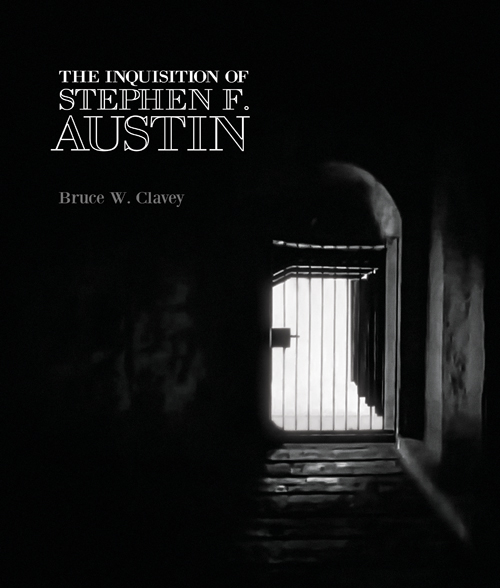Research
Featured Investigation
Diary to Dungeon
ABOUT THE BOOK
“The era of New Spain was over, and empresario Stephen F. Austin of San Felipe, Texas was in bitter trouble in Mexico. The centuries-old Holy Inquisition had recently ended, and Dominican priests had ceased the unsavory torture of citizens for religious crimes and the prosecuting of their own Jesuit brethren for advocating independence. Nevertheless, when Austin was arrested in 1834 on suspicion of sedition, he was jailed at the mother of Inquisition prisons in the capital city and forced to reckon with a legal system that still lay deep in its shadow. Austin’s dungeon habitat faded over time from Texas memory, but a description of his primitive quarters in his own words would provide the means for the recovery of its location. The Inquisition of Stephen F. Austin revisits how details from royal treasury records, civil engineer accounts, and eyewitness journalist articles, as unlocked by clues from his prison writings, were what led ultimately to the author’s rediscovery of his dungeon keep in the famed Palace of the Inquisition in 2017.”
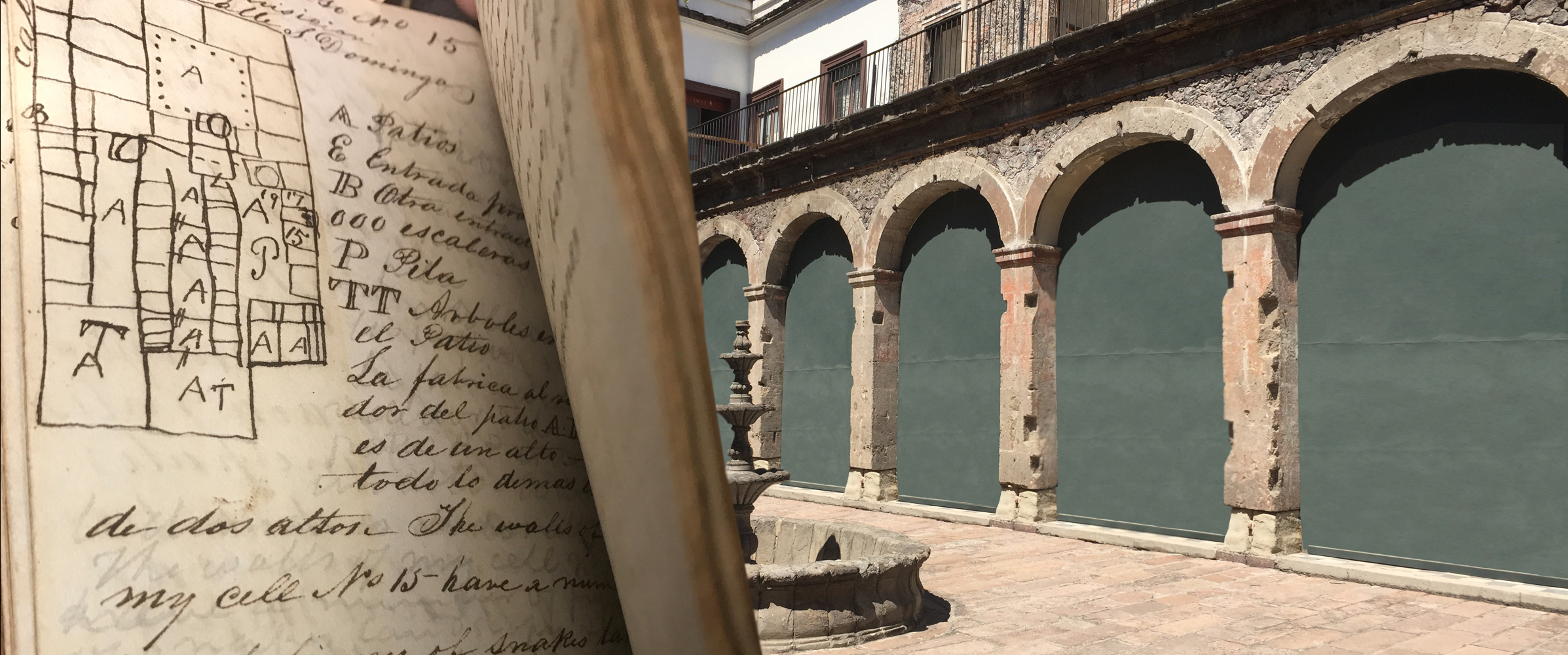
BEHIND THE BOOK
Occasionally in my years of exploring Texas revolution history, I’d run across photos of the secret diary kept by empresario Stephen F. Austin while imprisoned in Mexico in 1834. Austin’s dungeon cell in the Palace of the Inquisition was lost to knowledge for two centuries and imagined by some to have disappeared as the edifice crumbled and was renovated. My impression changed when I visited a special collections exhibit in late 2016 where Austin’s actual diary was on display and was opened to a page where he’d made a rough sketch of the palace floor plan. It suddenly thrilled me to think that his cell might still exist somewhere to be found.
Cryptic clues in his drawing—patios, randomly numbered cells, staircases, a fountain—proved a frustrating jumble. I found no resources in Texas repositories to support a backward look into Austin’s incarceration. But could his habitat be found by starting long before his imprisonment and moving forward through Inquisition history? Weeks passed as I began linking Austin’s clues to details from an assortment of archival documents dating as far back as the 1670s. The picture slowly formed, and through a fortunate stroke of connection, I won an invitation from historic site conservators in Mexico City to pay an onsite research visit. In February 2017, four months after seeing the diary behind glass, I entered the Palace of the Inquisition to stand in the cell that had been occupied by Austin. I became the first person since he departed the dungeon 183 years before to confirm its precise location.
In the year that followed, I was granted the opportunity to study the diary directly at the Center for American History in Austin, Texas. In summer 2018, I published my research on diary and dungeon in The Inquisition of Stephen F. Austin. Research goes on as the pocket-sized book continues to yield insights into the mind of Austin on the doorstep of the Texas Revolution. I’m pleased with one personal takeaway from the investigation: only two people have ever gone deep into the Texas leader’s prison musings and spent time in the cell where they were put to paper—and the other person is Stephen F. Austin.
More Exploration
Save Texas History Program
The Texas General Land Office is a robust resource of original maps and grants from the modern era back to the earliest years of Spanish Texas. Read research articles that I have written as a guest contributor to the GLO’s Save Texas History Program.
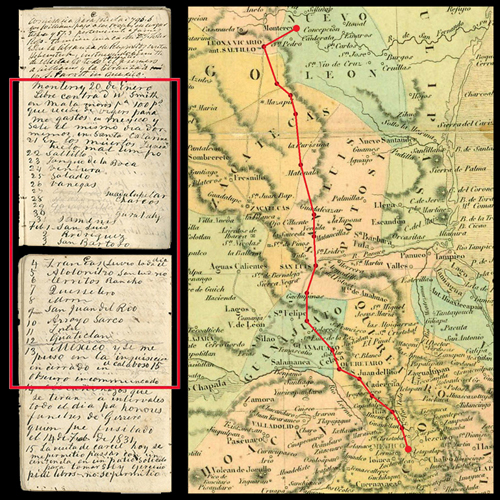
“The Inquisition Dungeon of Stephen F. Austin”
Few colonial Texans could boast of having entered a dungeon of the Holy Inquisition. By extraordinary fate, empresario Stephen F. Austin did so twice: once in 1822 as a distinguished visitor to a political prisoner, and again 12 years later after his arrest on suspicion of sedition. In 1834, Austin opened his diary and sketched the floor plan of his prison: Mexico City’s famed Palace of the Inquisition. Can his dungeon cell still be seen today?
Published May 2019, Save Texas History.
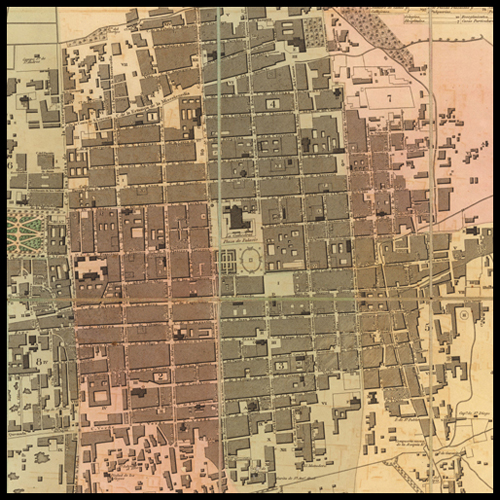
“Deep in the Heart of Mexico”
Stephen F. Austin sat isolated in a Mexico City prison. Arrested in 1834 and hundreds of miles from home and family, he struggled to steer Texas colonies through their worst discord yet. Troubled relations with Mexico are often seen from the angle of American settlers in Texas. Now that two centuries of dust have settled on Austin’s footprint in the capital city, how can we reconstruct the Mexican perspective from data in Texas repositories?
Published May 2019, Save Texas History.
Textrella
In 2020, I incorporated Textrella LLC with a mission to expand awareness and appreciation for the Latin heritage of Texas. My article series—currently in development—provides a compact history to track the evolution of regional settlement from the 15th century forward through Spanish, Mexican, and Tejano eras of identity. Read my introductory articles for two of those eras.
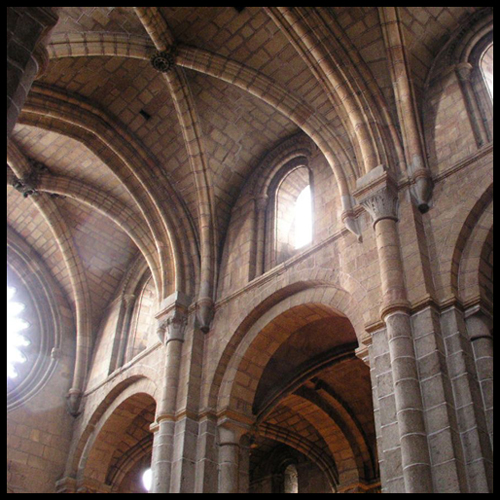
“In Far-off Spain”
Catholic monarchs Isabella and Ferdinand, who ushered in Modern Spain and instigated the Latin population of the Americas, also laid the earliest pavers to Spanish Texas.
Textrella Proto Texas series article 1.
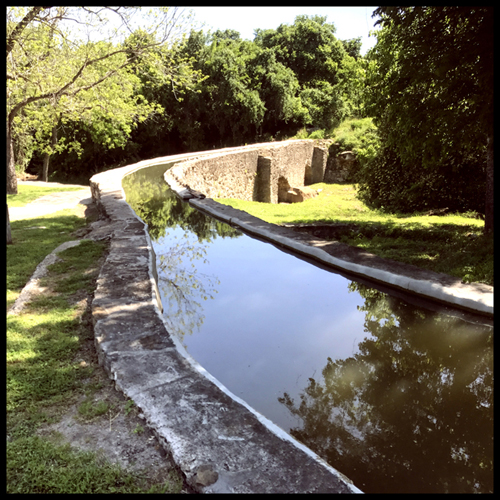
“Frontera Saints, Spanish Citizens”
In the early 1700s, the first Spanish missions of Texas were shaped by religious ideals, tested by local conflicts, and nearly destroyed by global politics.
Textrella Spanish Texas series article 1.
CREDITS. Textrella “In Far-off Spain” article card public domain image: Håkan Svensson (Xauxa) via the Free Software Foundation, Avila San Pedro Vaults, cropped, CC BY-SA 3.0.
